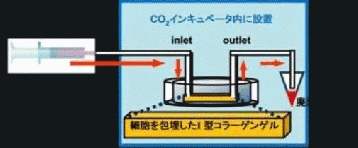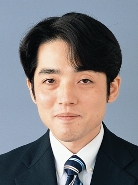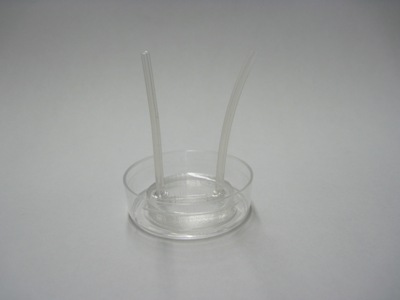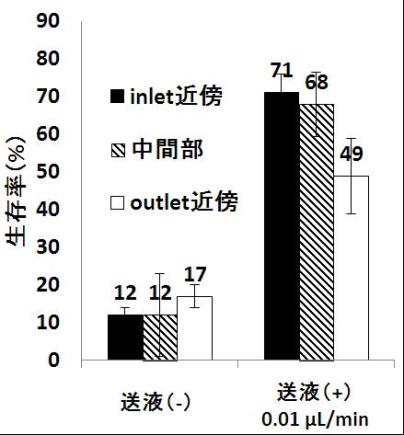
|
2011.06.13
Takeda lab has developed a novel three-dimensional culture system

Department of Life Science and Medical Bioscience.
Assoc. Prof.Naoya Takeda
Takeda lab of Department of Life Science and Medical Bioscience has developed a novel three-dimensional culture system to significantly improve the viability of cell culture.
A three-dimensional culture, which is the method of culturing cells embedded in the gel, has been intensively studied in the research of cell engineering and regenerative medicine, since cells are cultured on the conditions closer to that body. On the authentic method of 3-D culture, the gel is just immersed in the culture medium. Since the culture medium contained within the gel is not easily replaced, cells are exposed to shortage of nutrients and oxygen as well as accumulation of wastes from cells themselves, making long-term cell cultures difficult.
Takeda lab has newly developed a culture vessel with small channel (2x2x20 mm), consisting of glass and silicone rubber. Culture medium can be continuously pumped into the gel filled within the channel by a micro syringe pump, enabling exchange of the medium on a regular basis. Silicone rubber, which shows the high gas permeability, is also advantageous for supply of oxygen. The vessel is small enough to installed in a commercial incubator for cell culture.
Using this culture technique, PC12 cells as nerve model cell were three-dimensionally cultured in collagen gel with pumping the medium at flow rate = 0.01 L/min for one week. The cells were viable in 71%, which was about six-fold higher than the case without pumping (12%), showing the significant effect of the new culture techniques. Applying the flow affect the PC12 cell cultured within the gel in another way. PC12 cells typically extend neurites randomly in all directions, but the cells exposed to the flow stress elongated neurites almost in parallel to and also in antiparallel against the flow. More interestingly, outgrowth positions of neurites were limited in specific regions of cell body. In the future study, a number of nerve cells would be cultured together so as to uniformly elongate neurites to constitute a nerve bundle for medical applications.

Figure 1. Newly developed three-dimensional cell culture vessel. Culture medium can be continuously pumped through tubes.

Figure 2. Schematic representation of the entire three-dimensional cell culture systems enabling pumping the medium.

Figure 3. Cell viability in the three-dimensional cell culture vessel developed in this study. With (+) and without (-) pumping the medium. Error bars show standard deviation (n = 3).
|





